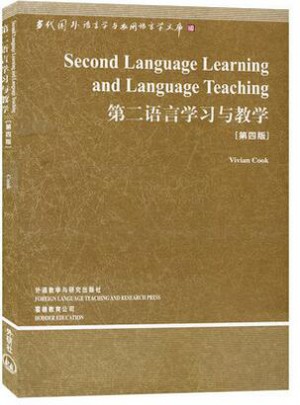
當代國外語言學與應用語言學文庫:第二語言學習與教學(第4版)(第3輯)
- 所屬分類:圖書 >外語>英語學術著作
- 作者:[英] [庫克]([Vivian] [Cook]) 著
- 產品參數:
- 叢書名:--
- 國際刊號:9787513504768
- 出版社:外語教學與研究出版社
- 出版時間:2011-08
- 印刷時間:2011-08-01
- 版次:1
- 開本:16開
- 頁數:--
- 紙張:膠版紙
- 包裝:平裝-膠訂
- 套裝:否

當代國外語言學與應用語言學文庫:第二語言學習與教學(第4版)(第3輯)》介紹了第二語言習得研究的;些觀點以及這些觀點對語言教學的指導,是寫給從事英語第二語言教學的教師和攻讀應用語言學專業的研究生的一本專著。《當代國外語言學與應用語言學文庫:第二語言學習與教學(第4版)(第3輯)》及時版出版后,在第二語言教學界產生了廣泛的影響,現出版的第四版在內容上有很多更新和補充,重點論述了第二語言學習者的特點和第二語言在不問環境中的使用。
Acknowledgements Note to teachers Background .to second language acquisition research and language teaching 1.1 The scope of this book 1.2 Common assumptions of language teaching 1.3 What is second language acquisition research? 1.4 What a teacher can expect from SLA research 1.5 Some background ideas of SLA research Discussion topics Further reading Glosses on language teaching methods 2 Learning and teaching different types of grammar 2.1 What is grammar? 2.2 Structure words, morphemes and sequences of acquisition 2.3 The processability model 2.4 Principles and parameters grammar 2.5 L2 learning of grammar and L2 teaching 2.6 The role of explicit grammar in language teaching Discussion topics Further reading Some grammatical terms 3 Learning and teaching vocabulary 3.1 Word frequency 3.2 Knowledge of words 3.3 One word-store or two in the L2 user's mind? 3.4 Types of meaning 3.5 Strategies for understanding and learning vocabulary 3.6 Vocabulary and teaching Discussion topics Further reading Answers to Box 3.1 4 Acquiring and teaching pronunciation 4.1 Phonemes and second language acquisition 4.2 Learning syllable structure 4.3 General ideas about phonology learning 4.4 Choosing a model for teaching pronunciation 4.5 Learning and teaching pronunciation 4.6 Learning and teaching intonation Discussion topics Further reading 5 Acquiring and teaching a new writing system 5.1 Writing systems 5.2 Spelling 5.3 Punctuation 5.4 The writing system and language teaching Discussion topics Further reading Answer to Box 5.1 Answer to Box 5.8 6 Strategies for communicating and learning 6.1 Communication strategies 6.2 Learning strategies: how do learners vary in their approaches to L2 learning? Discussion topics Further reading Answers to Box 6.1 7 Listening and reading processes 7.1 Meaning and reading 7.2 Listening processes Discussion topics Further reading …… 8 Individual differences in L2 users and L2 learners 9 ClassroOm interaction and Conversation Analysis 10 The L2 user and the native speaker 11 The goals of language teaching 12 General models of L2 learning 13 Second language learning and language teaching styles List of coursebooks mentioned References Index
Teaching methods usually incorporate a view of L2 learning, whether implicitlyor explicitly. Grammar-translation teaching, for example, emphasizes explana-tions of grammatical points because this fits in with its view that L2 learning is theacquisition of conscious knowledge. Communicative teaching methods requirethe students to talk to each other because they see L2 learning as growing out ofthe give-and-take of communication. For the most part, teaching methods havedeveloped these ideas of learning independently from SLA research. They are notbased, for example, on research into how learners use grammatical explanationsor how they learn by talking to each other. More information about how learnersactually learn helps the teacher to make any method more effective and can putthe teacher's hunches on a firmer basis